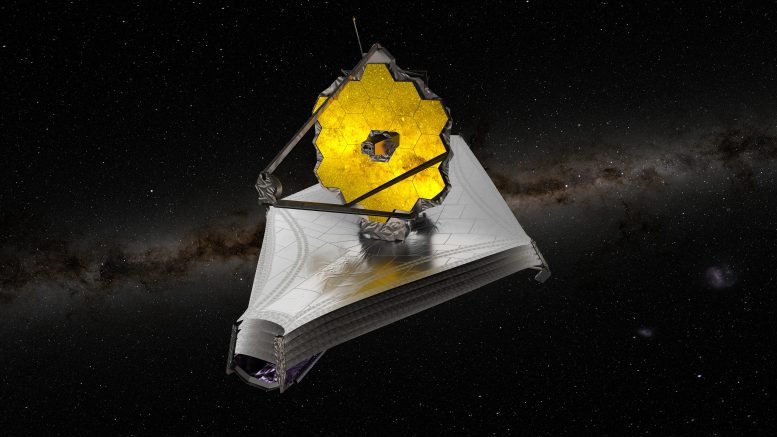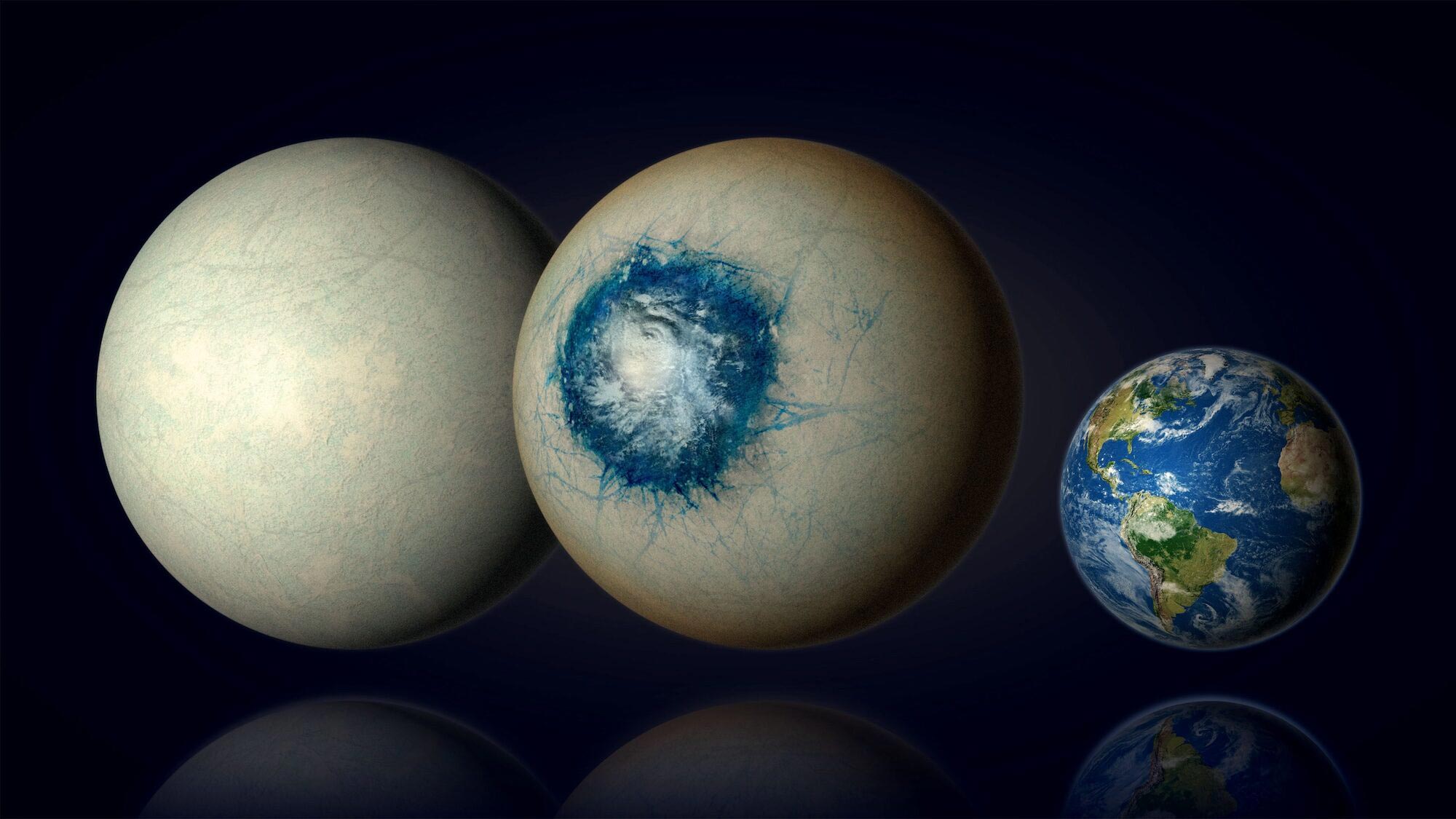Temperate exoplanet LHS 1140 b may be a world completely covered in ice (left) similar to Jupiter’s moon Europa or may be an ice world with a liquid substellar ocean and a cloudy atmosphere (center). LHS 1140 b is 1.7 times the size of our planet Earth (right) and is the most promising habitable zone exoplanet yet found in the search for liquid water beyond the Solar System. Credit: Benoit Gougeon, Université de Montréal
Researchers used data from multiple space telescopes, including the 
Launched in 2021, the James Webb Space Telescope is the next great space science observatory following Hubble, designed to answer outstanding questions about the Universe and to make breakthrough discoveries in all fields of astronomy. Its infrared capabilities allow it to study the atmospheres of distant planets in detail, identifying elements like water vapor, methane, and possible biosignatures. Credit: ESA/ATG medialab
LHS 1140 b, a Potentially Habitable World
LHS 1140 b, an exoplanet orbiting a low-mass red dwarf star roughly one-fifth the size of the sun, has captivated scientists due to it being one of the closest exoplanets to the solar system that lies within its star’s habitable zone. Exoplanets found in this “Goldilocks Zone” have temperatures that would allow water to exist on them in liquid form, a crucial element for life as we know it on Earth.
One of the critical questions about LHS 1140 b was whether it is a mini-Neptune type exoplanet or a super-Earth—a rocky or water-rich planet larger than Earth.
“Of all currently known temperate exoplanets, LHS 1140 b could well be our best bet to one day indirectly confirm liquid water on the surface of an alien world beyond our solar system,” said Charles Cadieux, lead author of the science paper and doctoral student at Université de Montréal. “This would be a major milestone in the search for potentially habitable exoplanets.”

Ryan MacDonald. Credit: University of Michigan
JWST Data Leads to New Insights
Analysis of the team’s observations strongly excluded the mini-Neptune scenario, with evidence suggesting the exoplanet LHS 1140 b is a super-Earth that may even have a nitrogen-rich atmosphere like that of Earth’s. However, the team cautions that additional observations with JWST observations will be necessary to confirm the signature of nitrogen gas.
Estimates based on all accumulated data reveal that LHS 1140 b is less dense than expected for a rocky planet with an Earth-like composition, suggesting that 10 to 20% of its mass may be composed of water. This discovery points to LHS 1140 b being a compelling candidate water world, likely resembling a snowball or ice planet with a potential liquid ocean at the sub-stellar point, or the area of the planet’s surface that would always be facing the system’s host star due to the planet’s synchronous rotation (much like the Earth’s moon).
Possible Presence of an Atmosphere and Ocean
MacDonald conducted the atmospheric retrieval analysis that suggests LHS 1140 b has a nitrogen-rich atmosphere, potentially similar to the Earth’s atmosphere, which is 78% nitrogen. While it is still only a tentative result, the presence of a nitrogen-rich atmosphere would suggest the planet has retained a substantial atmosphere, creating conditions that might support liquid water.
This discovery favors the water world/snowball scenario as the most plausible. Current models indicate that if LHS 1140 b has an Earth-like atmosphere, it would be a snowball planet with a bull’s-eye ocean about 4,000 kilometers in diameter, equivalent to half the surface area of the Atlantic Ocean. The surface temperature at the center of this alien ocean could even be a comfortable 20 degrees arXiv:2406.15136













/https://tf-cmsv2-smithsonianmag-media.s3.amazonaws.com/filer_public/d1/82/d18228f6-d319-4525-bb18-78b829f0791f/mammalevolution_web.jpg)






Discussion about this post